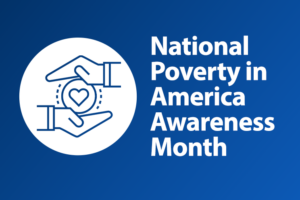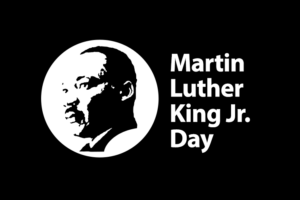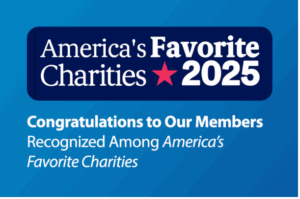Steve Delfin | December 25, 2012
3 Key Trends That Will Drive Philanthropic Change in 2013
What will be the new trends in employee engagement and workplace giving in 2013? What expectations and impact will young adults have with regards to philanthropy at work?
There are many challenges and questions like these facing the non-profit sector and businesses alike. That’s why America’s Charities has surveyed the work of others in our space and considered the impact and solutions that young adults will demand from workplace philanthropy programs. We’ve even just finished conducting research of our own to help you plan for what’s ahead in 2013. As the New Year approaches us, now is the time to focus on how to take these challenges and emerging trends and look at the opportunities they present for you.
Here’s a quick list of what America’s Charities see’s happening in 2013:
- More accountability, but not in the traditional sense:
When deciding who to give to this year, it won’t just be financials and the traditional (and often meaningless) measure of fundraising and administrative expenses that donors rely on. Donor expectations are moving toward a clear understanding of the results that a charity achieves in relation to its stated mission.Case in point – GuideStar, the Better Business Bureau Philanthropic Advisory Service and the Independent Sector have created a new initiative called “Charting Impact”. Charting Impact asks five very simple questions – the answers to which are designed to help charities focus on and communicate their results. Charities will be well-served to become familiar with and participate in this initiative which in my view has the potential to become the standard by which charities will be measured.
- Low “overhead” IS NOT the measure of a charity’s success:
For many years United Way did a lot of damage in perpetuating the myth that a charity that spent more than 10% on “overhead” was not worthy of support. Unfortunately that 10% figure continues to stick with some as a measure of value, because traditional media and self-proclaimed “watch-dog” groups will continue to fuel the myth that overhead and salaries are the measure of a charity’s value.Good news is, donors are smarter and more enlightened than ever. They understand that the measure of a charity’s success isn’t low “overhead”. It is clear that charitable organizations that have a strong infrastructure and sustainable resources are the ones proving successful and effective at creating true impact. And with social media, the non-profit sector can directly communicate with donors the real costs of delivering services and programs to people, and explain why it’s important to invest in infrastructure.
- Young adults will drive a new era of volunteering, giving, & leadership:
The philanthropic values and expectations being ingrained in today’s and tomorrow’s young adults have the potential to generate truly transformative change in our businesses, our communities and all across the world. The nonprofit sector and community-minded businesses have an opportunity to infuse ourselves with a new generation of talent, the likes of which we’ve never had access to before.I serve on the advisory board of an organization called Net Impact. Net Impact exists to connect socially responsible MBA students and alumni with businesses and organizations that share their values. The first Net Impact conference I attended in 2002 had about 250 attendees. This year in Baltimore, the Net Impact conference had over 2,000 attendees. This young, energetic talent is entering the sector as volunteers, as donors and perhaps more importantly as employees, board members and consultants. More and more, MBA students who used to take their talent to Wall Street are looking seriously at applying their energy, smarts, business savvy and entrepreneurial DNA to the nonprofit sector instead. This will bring transformative results and impact, as well as a new generation of sector leaders.
In order to attract and retain this new talent and the promise of impact and results they bring, we will have to be creative and more progressive in our thinking about compensation, benefits, philanthropy and related issues important to today’s young employee.
We just completed a study of the state of workplace giving. Workplace employee giving accounts for some $4 billion a year in donations, but that number has been flat for several years. Our research and experience shows that employers who employ progressive workplace giving practices and connect employee workplace giving to employee engagement are the ones seeing increases in their fundraising and increases in employee satisfaction.
Click here to download our latest research, “Snapshot: Trends and Strategies to Engage Employees in Greater Giving.”
Steve Delfin
|
Get Resources and Insights Straight To Your Inbox
Explore More Articles
Congratulations to Our Members Recognized Among America’s Favorite Charities
Each year, The Chronicle of Philanthropy releases its list of America’s Favorite Charities—the 100 nonprofits that raise the most from individual donors, foundations, and corporate…
Read ArticleGet Resources and Insights Straight To Your Inbox
Receive our monthly/bi-monthly newsletter filled with information about causes, nonprofit impact, and topics important for corporate social responsibility and employee engagement professionals, including disaster response, workplace giving, matching gifts, employee assistance funds, volunteering, scholarship award program management, grantmaking, and other philanthropic initiatives.


 Steve has 30 years of experience working in and with major national and international not-for-profit organizations and socially-responsible international corporations, including a long history of engagement with and leadership around workplace giving and employee volunteerism programs.
Steve has 30 years of experience working in and with major national and international not-for-profit organizations and socially-responsible international corporations, including a long history of engagement with and leadership around workplace giving and employee volunteerism programs. 

